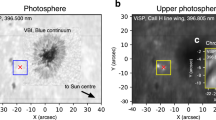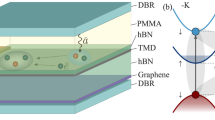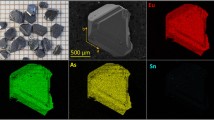Abstract
WITH a nearly uniform magnetic field of fifteen thousand gauss perpendicular to an electric field which varies from zero to fifteen thousand volts per centimetre, I find many lines which are not ordinary Stark components and appear not to be due to impurities. Effects are similar in the corresponding parhelium and orthohelium line groups near the diffuse series lines. For example, strong lines appear on the violet side of 4388 A. and 4026 A. at distances nearly double those of the usual fundamental combination lines of the Stark effect. These well-defined lines show no decided polarisation, and at maximum field are displaced toward the red 0.5 A. and 0.2 A. respectively. At an intermediate value of electric field, components in 4026 group are displaced from the diffuse line 0.25 A., 0.47 A., 0.62 A., 0.78 A., 1.90 A., 2.10 A. The components in positions of usual Stark components of large displacements are relatively diffuse.
This is a preview of subscription content, access via your institution
Access options
Subscribe to this journal
Receive 51 print issues and online access
$199.00 per year
only $3.90 per issue
Buy this article
- Purchase on SpringerLink
- Instant access to full article PDF
Prices may be subject to local taxes which are calculated during checkout
Similar content being viewed by others
Author information
Authors and Affiliations
Consortia
Rights and permissions
About this article
Cite this article
IMPERIAL WIRELESS SERVICES., FOSTER, J. Effect of Electric and Magnetic Fields on the Helium Spectrum. Nature 123, 414 (1929). https://doi.org/10.1038/123414b0
Issue date:
DOI: https://doi.org/10.1038/123414b0



